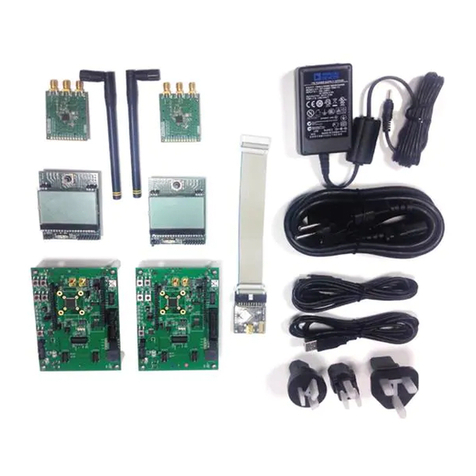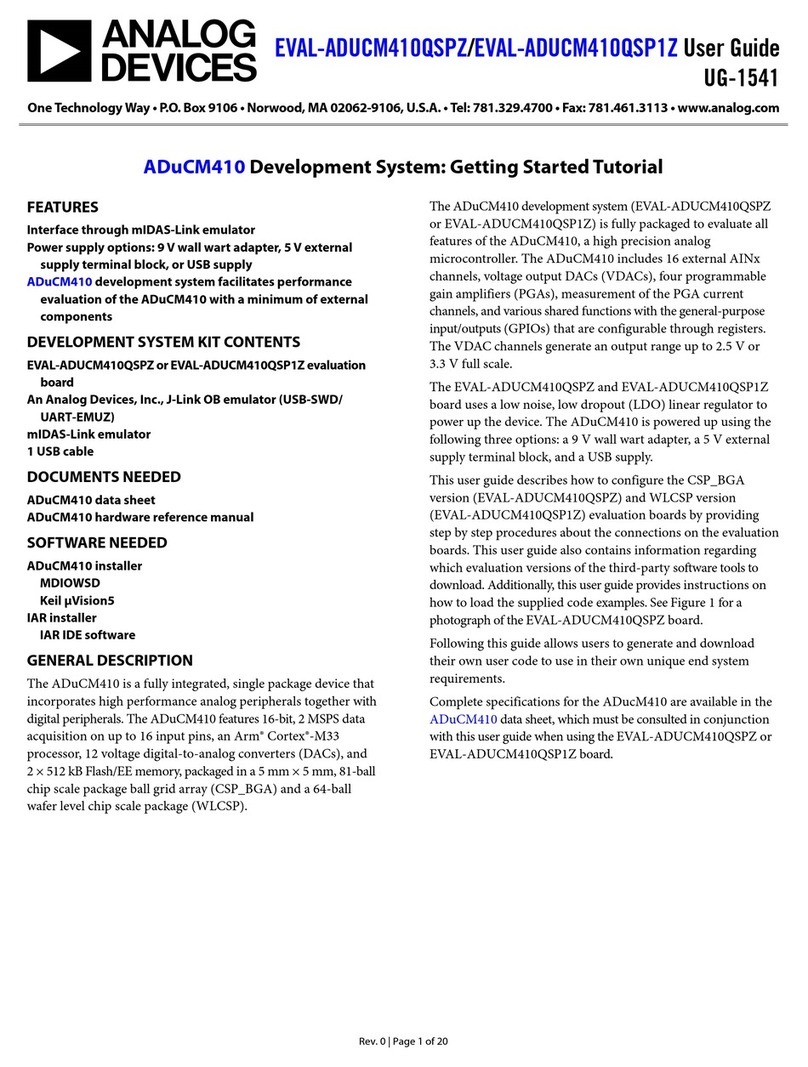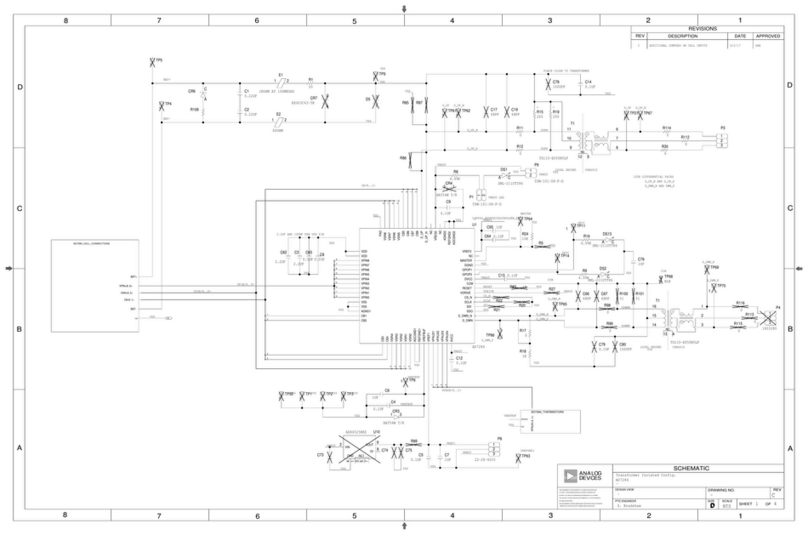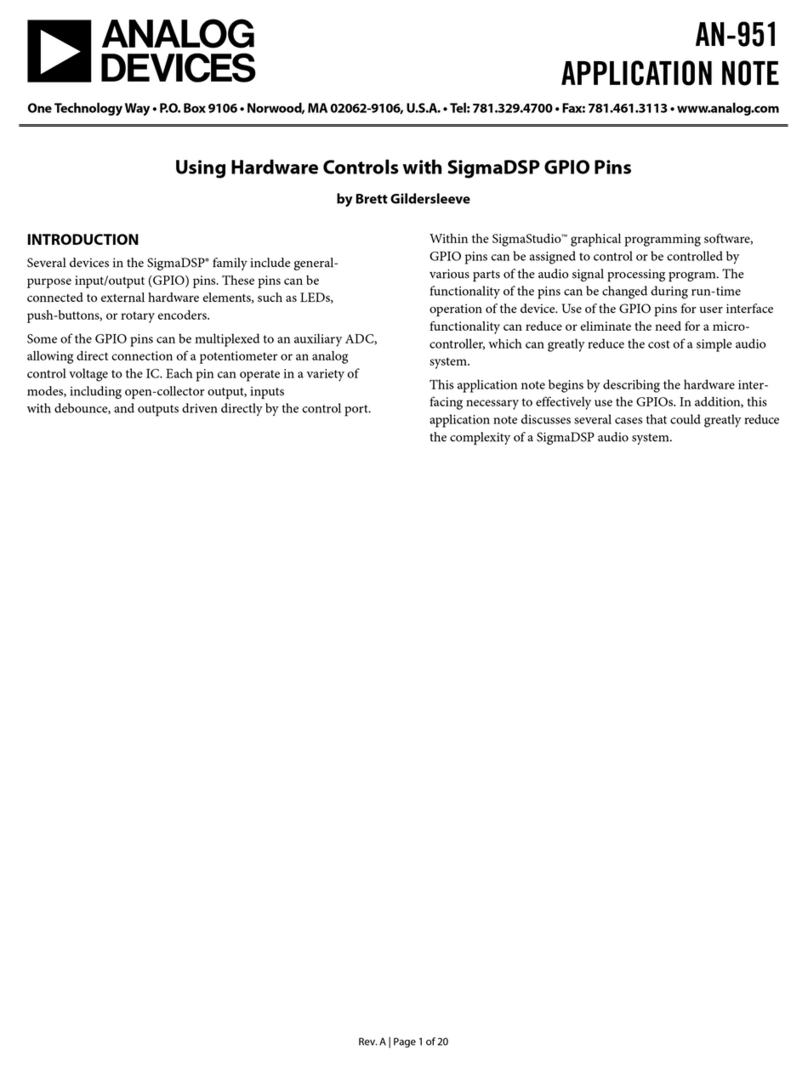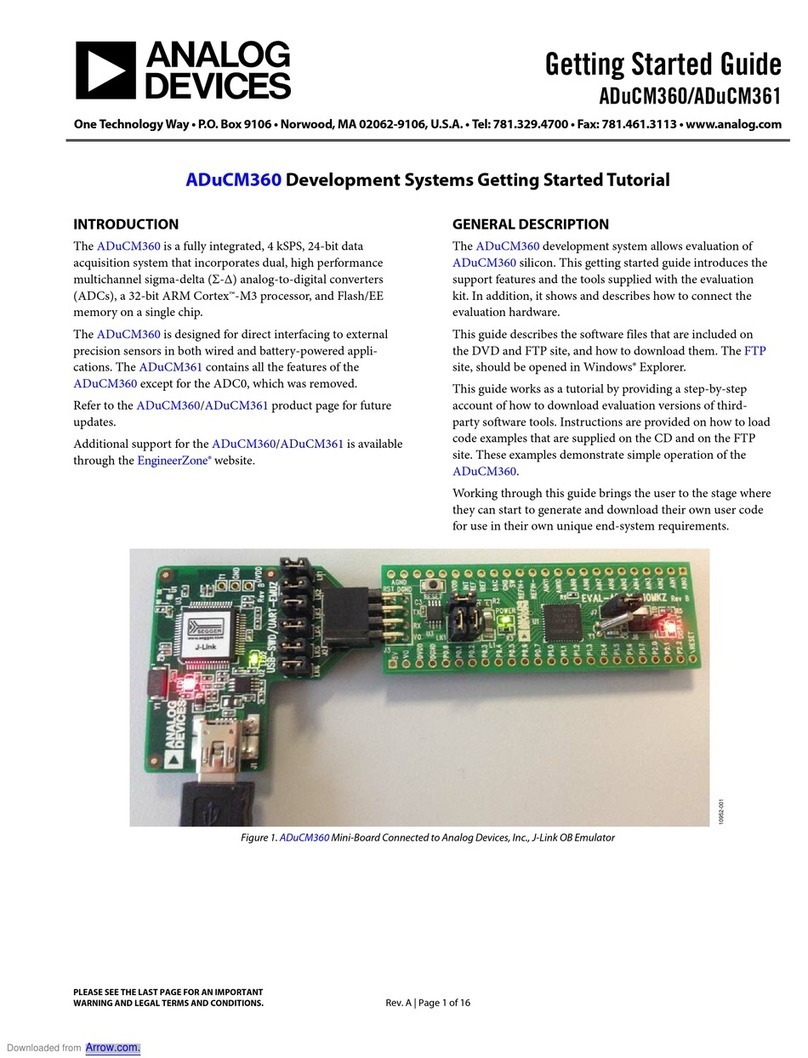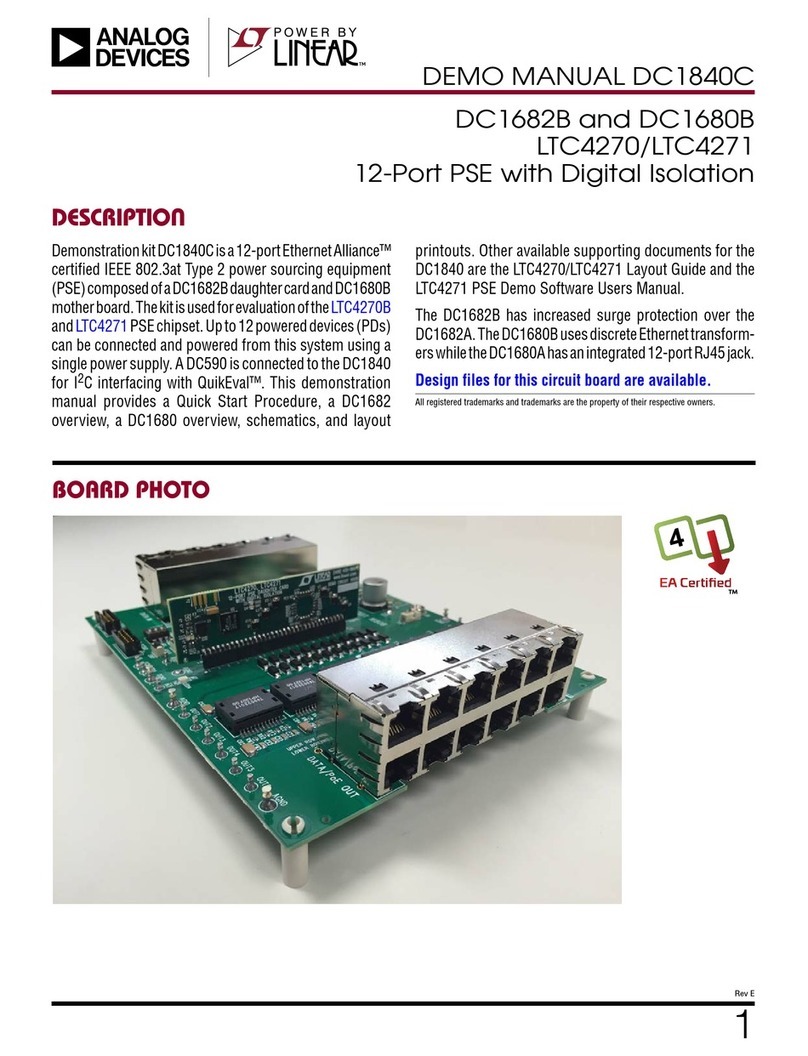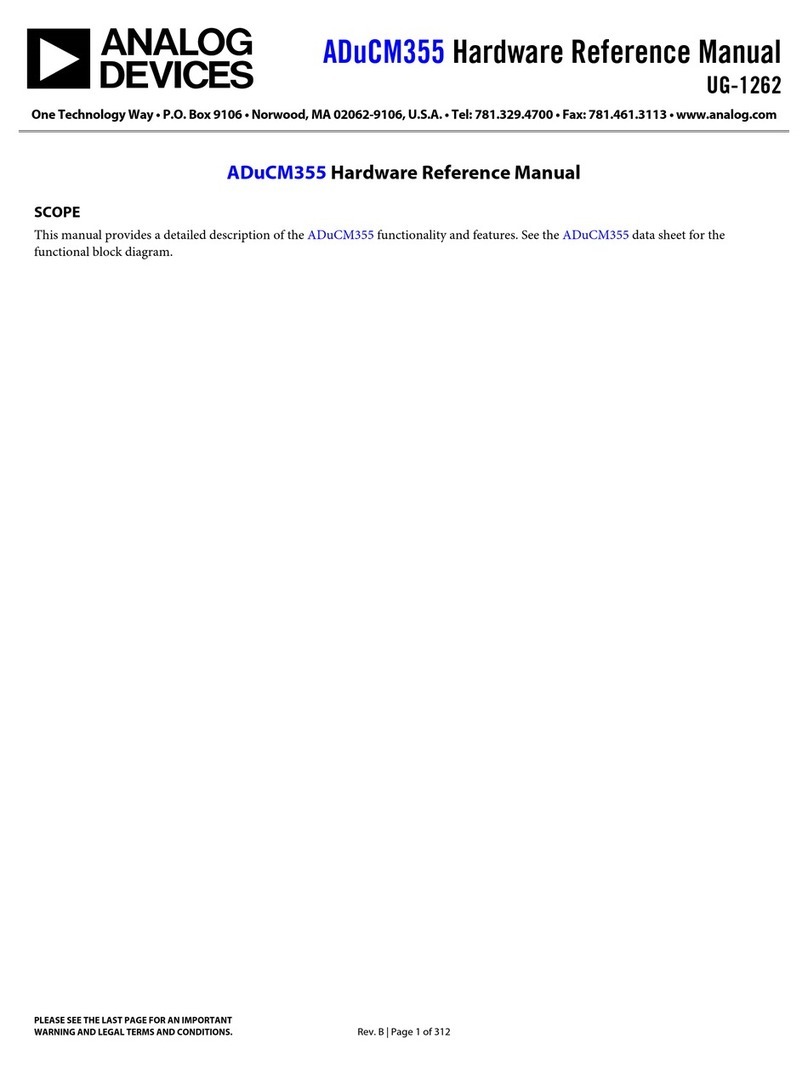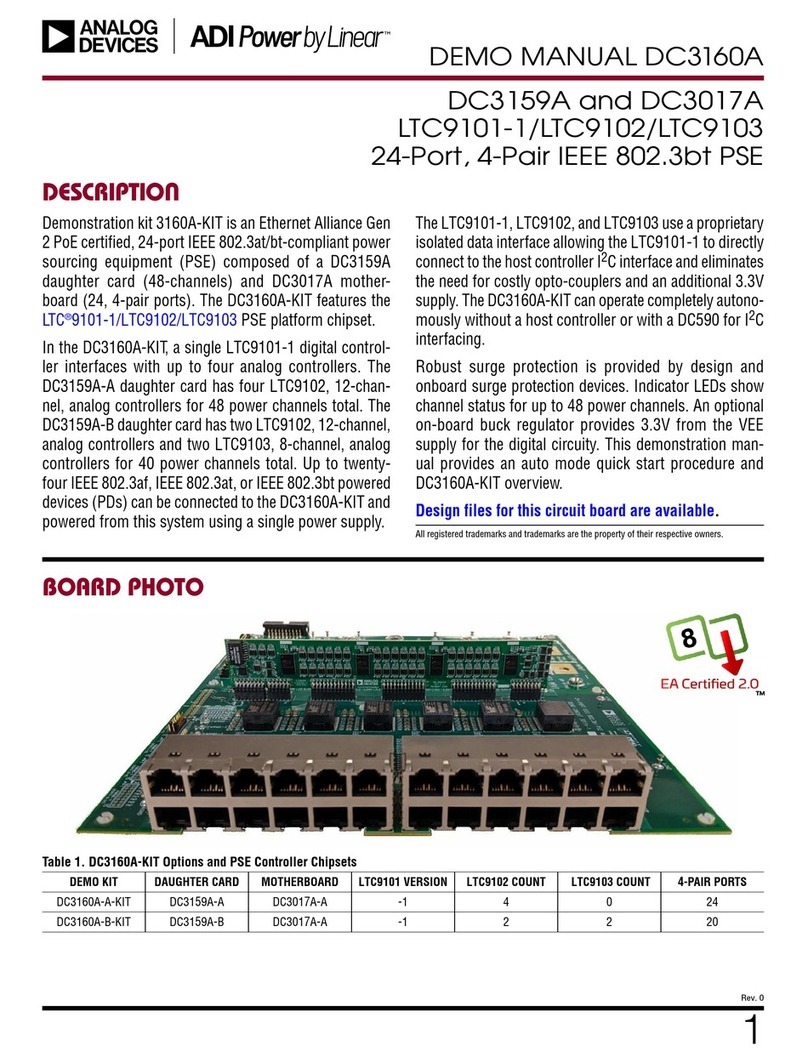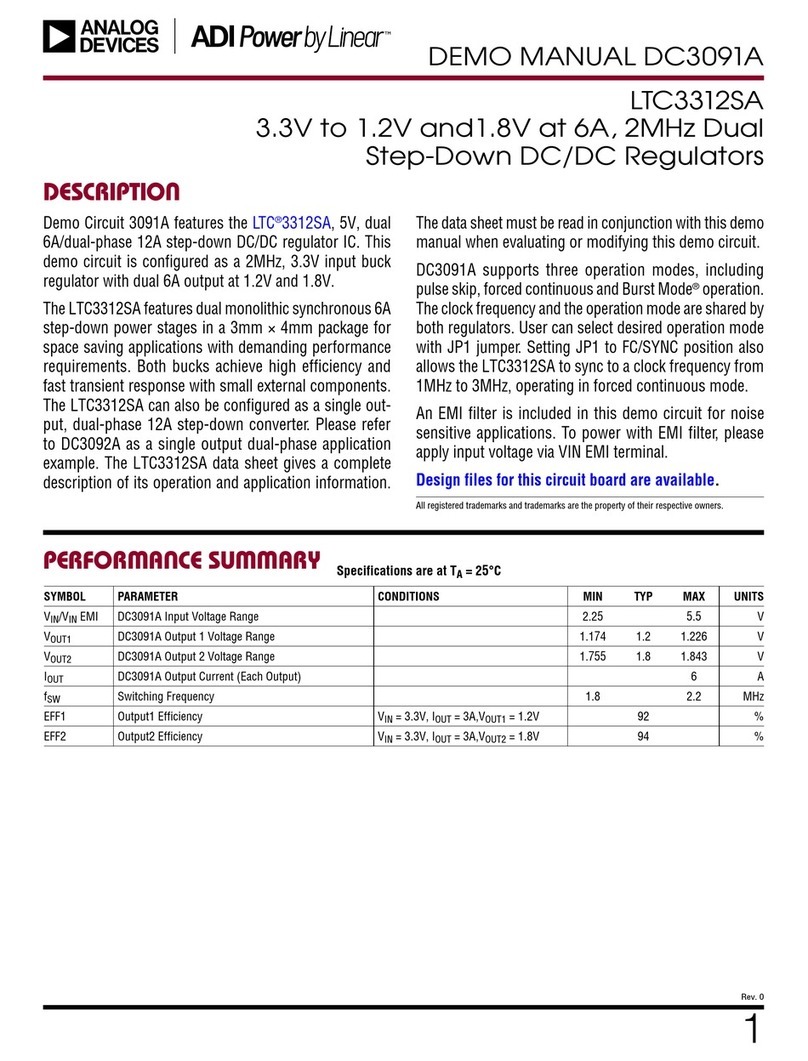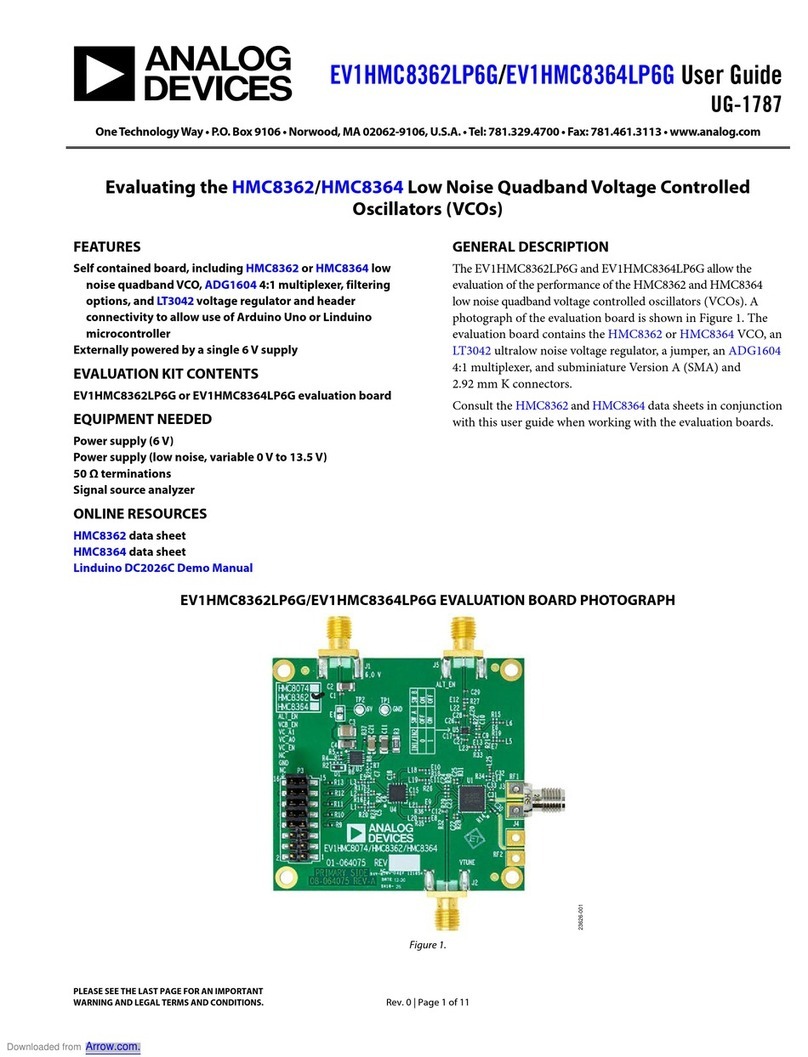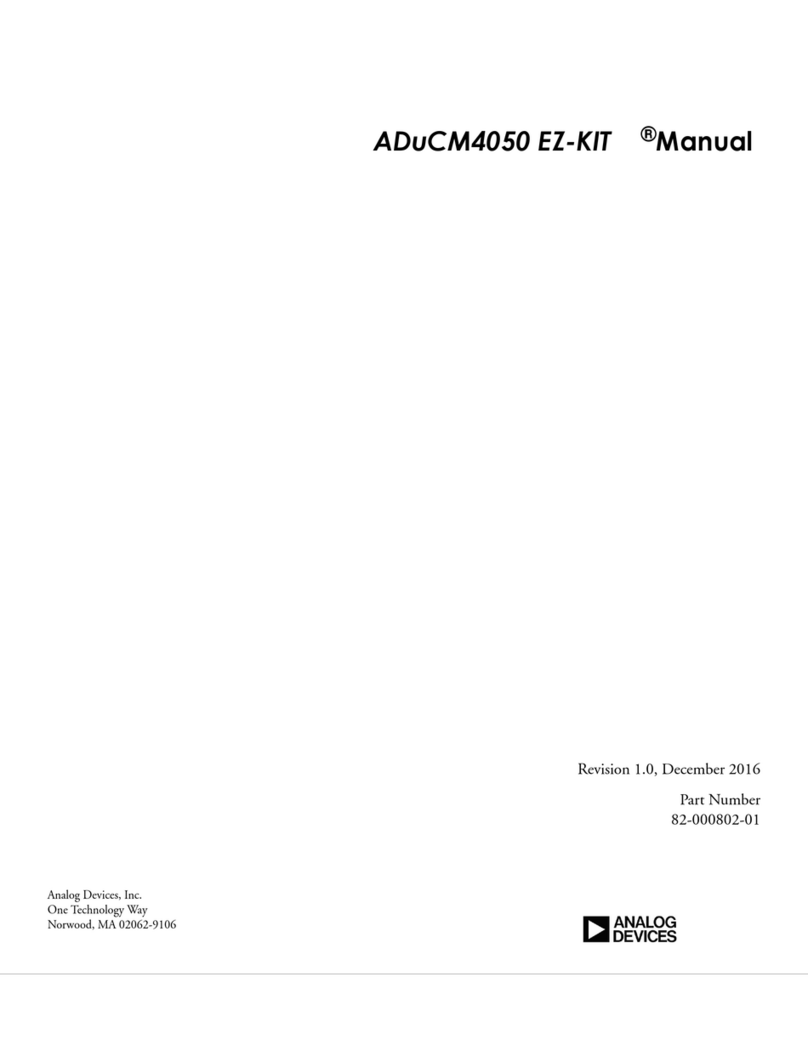
Preliminary Technical Data UG-1828
Rev. PrC | Page 3 of 338
Datapath .................................................................................... 124
Digital Front End (DFE) ......................................................... 124
Analog Front End (AFE)......................................................... 129
Transmit Data Chain API Programming.............................. 130
Receiver/Observation Receiver Signal Chain........................... 131
Receive Data Chain.................................................................. 133
Analog Front-End Components ............................................ 134
LPF ............................................................................................. 135
ADC ........................................................................................... 135
Digital Front End Components.............................................. 136
DC Offset .................................................................................. 136
QEC............................................................................................ 137
DDC ........................................................................................... 137
Frequency Offset Correction.................................................. 137
PFIR ........................................................................................... 137
RSSI ............................................................................................ 137
Receive Data Chain API Programming ................................ 138
Transmitter/Receiver/Observation Receiver Signal Chain
Calibrations................................................................................... 140
Initial Calibrations ................................................................... 140
Tracking Calibrations .............................................................. 150
Receiver Gain Control ................................................................. 154
Receiver Datapath .................................................................... 155
Gain Control Modes ................................................................ 158
Gain Control Detectors........................................................... 166
AGC Clock and Gain Block Timing...................................... 169
Analog Gain Control API Programming.............................. 170
Digital Gain Control and Interface Gain (Slicer) ................ 177
Digital Gain Control and Interface Gain API Programming
.................................................................................................... 179
Usage Recommendations........................................................ 180
TES Configuration and Debug information ........................ 181
Rx Demodulator........................................................................... 184
Rx Narrow-band Demodulator Subsystem .......................... 184
Normal IQ Output Mode ........................................................ 188
Frequency Deviation Output Mode....................................... 188
API Programming.................................................................... 189
Power Saving and Monitor Mode .............................................. 191
Power-Down Modes ................................................................ 191
Power-Down/Power-Up Channel in Calibrated State ........ 192
Dynamic Interframe Power Saving........................................ 192
Monitor Mode .......................................................................... 194
Digital Predistortion.....................................................................197
Background................................................................................197
ADRV9001 DPD Function......................................................197
ADRV9001 DPD Supported Waveforms...............................199
DPD with Frequency Hopping (FH)......................................199
ADRV9001 DPD Performance ...............................................199
Closed Loop Gain Control (CLGC) .......................................201
DPD/CLGC Configuration .....................................................201
Board Configuration ................................................................210
Save and Load DPD Coefficients from Last Transmission .211
Define the Frequency Region when Performing DPD with
FH ...............................................................................................211
DPD/CLGC API Programming..............................................212
DPD Tuning and Testing .........................................................212
CLGC Target Gain Measurment.............................................215
Dynamic Profile Switching ..........................................................216
Overview ....................................................................................216
Initial Calibration with DPS ....................................................216
Perform DPS On the Fly ..........................................................217
DPS API Programming............................................................218
summary of DPS Limitations ..................................................218
DPS Operations in TES............................................................219
General-Purpose Input/Output and Interrupt Configuration221
Digital GPIO Operation...........................................................222
Analog GPIO Operation..........................................................225
Interrupt .....................................................................................226
Auxiliary Converters and Temperature Sensor.........................227
Auxiliary DAC (AuxDAC).......................................................227
Auxiliar y ADC (AuxADC) ......................................................227
Temperature Sensor ..................................................................228
RF Port Interface Information.....................................................229
Transmit Ports: TX1± and TX2±............................................229
Receive Ports: RX1A±, RX1B±, RX2A±, and RX2B± .........229
External LO Ports: LO1± and LO2± ......................................229
Device Clock Port: DEV_CLK1± ...........................................229
RF Rx/Tx Ports Impedance Data ............................................229
General Receiver Port Interface ..............................................232
General Transmitter Bias and Port Interface.........................234
Impedance Matching Network Examples..............................236
Receiver RF Port Impedance Matching Network.................236
Receiver RF Port Impedance Match Measurement Data ....239
